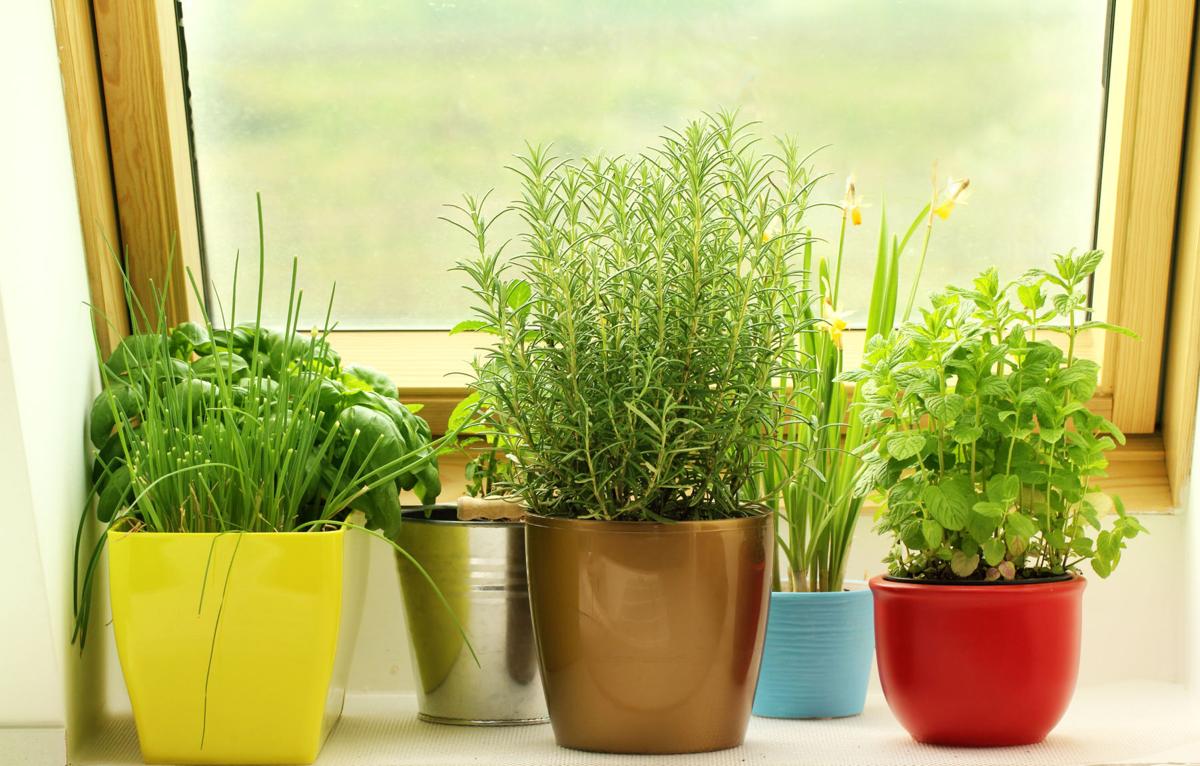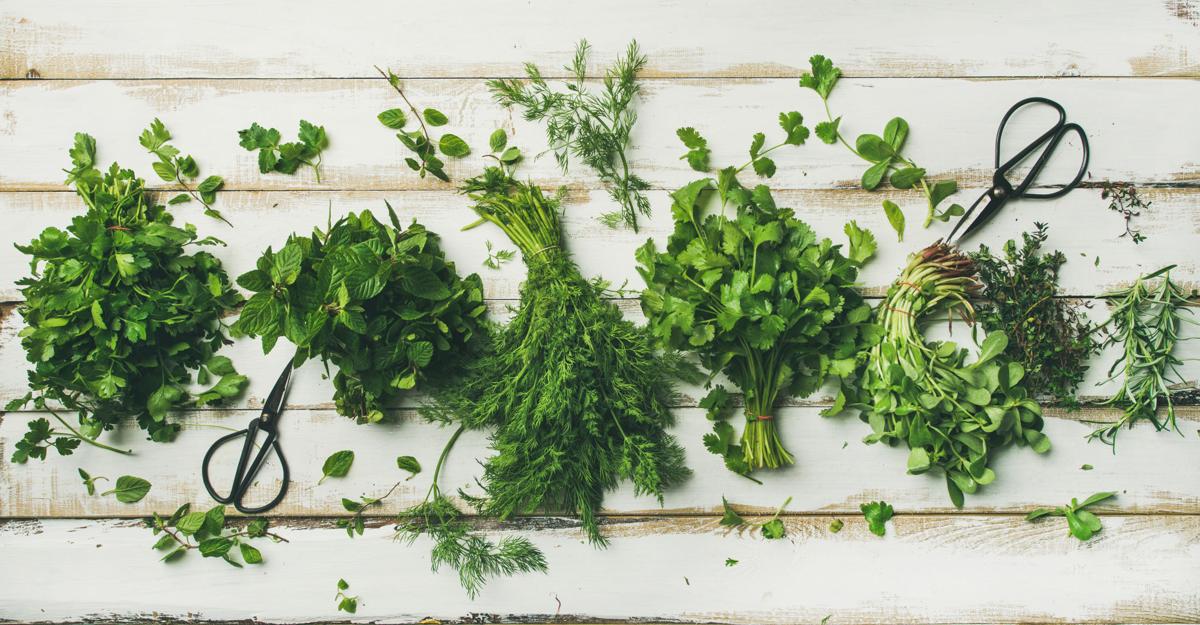Farmers markets are now open in the region, with a few more beginning in the upcoming week. Among the many items you will find are pots of fresh herbs to replant in your home garden. One of the numerous benefits of growing your own herbs is using them in cooking. However, it is easy to become intimidated with the process. Learning how to pick and store herbs and when to add herbs to the cooking process will elevate your own dishes.
Picking and Storing Fresh Herbs
We can easily be tempted to pick herbs as we need them for our recipes. However, the optimal time to pick is in the morning before the hot summer sun hits the plants. Gather herbs in bunches and tie the stems with kitchen string to keep them together.
To store fresh herbs, wrap them loosely in a damp paper towel and place them in a food-safe plastic bag or reusable container. Do not remove the air from the container. Place the herbs in the warmest part of your refrigerator, usually the door. Use the herbs within a few days, cutting away any dark or wilted leaves. If you wash your herbs, do so immediately before using.
Freezing Herbs
You can also freeze fresh herbs by freezing individual sprigs on a baking sheet then transferring the frozen sprigs to a freezer-safe container. Use them just as you would fresh herbs. Although the color will change, the flavor will not.
Another option is to freeze the leaves of tender herbs in ice cube trays covered in water. This essentially makes an herb ice cube that will allow for longer freezer storage. Place ice cubes in a freezer-safe container for single-serve access. Use these in soups, stews, or sauces.
Combining olive oil with herbs is another way to prepare them for longer term freezing. This can be done a few ways. Add herbs to ice cube trays then cover with oil or pulse the leaves with oil in a food processor then pour the mixture into ice cube trays then freeze. Place individual cubes in a freezer-safe container for easy access when cooking.
Cooking with Herbs
Fresh herbs must be cut or crushed for the oils to be released and the herb to provide maximum flavor. This can be done with a chef’s knife, herb shears, or a roller-style herb mincer. Strip the leaves of the herb from the stem before chopping.
Adding fresh herbs to your recipe depends on the herb as well as the flavor you want. Hardy herbs can be used in recipes that are cooked for a long time like sauces, stews or braised meats. These include oregano, rosemary, savory, and thyme. More tender herbs like basil, dill, mint, and parsley should be added near the end of the cooking time. Their delicate leaves will not withstand longer cooking.
If you want to punch up the flavor of your dish, add fresh herbs at the very end of your recipe’s cooking time. You can also use kitchen twine to tie stems of herbs together to create a bouquet garni. This herb bundle can then be left in your soup or stew to cook and easily removed at the end of the cooking process. This will impart flavor without overpowering the dish.
If you are new to growing and cooking with fresh herbs, start with basil, chives, parsley, or rosemary. These are the easiest to grow and more versatile in cooking.
May 19, 2021
https://ift.tt/3oApFjJ
Taste | Cooking with herbs - The Southern
https://ift.tt/3eCf9lu
Herb


No comments:
Post a Comment